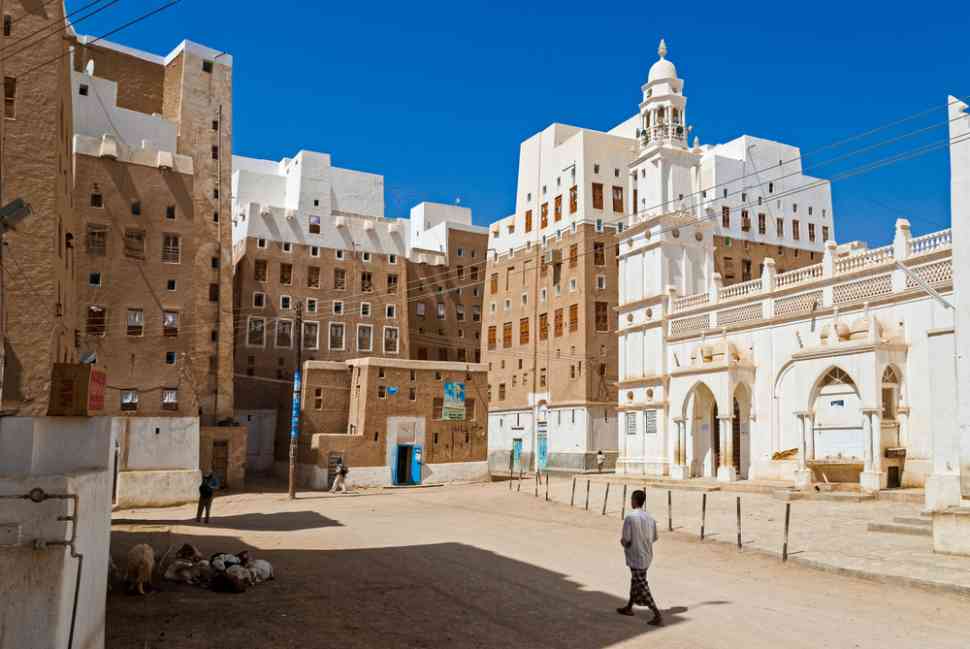Shibam: The Manhattan of the Desert

In the heart of Yemen lies a cluster of ancient mud skyscrapers standing in the desert. It is the city of Shibam, which was built in the 16th century. It remains among the world’s oldest cities where vertical construction was used. With this specific urban planning with a vertical construction, these houses were the first skyscrapers in the world. The “Manhattan of the desert” is located on a hill in the Yemeni desert. Some of the buildings exceed 30 meters in height. The average of the floors is five, while the tallest has eight floors.
The Bedouin raids help architecture evolve
So why did people build tall structures with many floors considering there was no space problem at the time? For modern people, the only reason one would attempt to build apartments one over the other would be to make enough room for everyone. Well, for people in those days, these buildings had something else to offer, and this was no other than safety. It is noteworthy that the city’s specific design was made to protect the inhabitants as much as possible from Bedouin attacks.
The structure of the buildings
According to National Geographic, the brick-built high-rise buildings, which span up to seven floors, were constructed from the fertile soil around the city. Soil, hay, and water were used for the bricks, which were then baked using the sun’s heat for days. The windowless ground floors were used for livestock and grain warehouses, while the upper floors were among other meeting places. Overground bridges and doors connect the buildings, which is both utilitarian and a measure of city defense. The entire area is a major Yemeni attraction, gathering crowds of people who remain stunned by the construction. The first impression of them all is that they are in a huge city made in the sand in the center of the desert.
The fierce disasters in the city
However, Shibam is currently under threat, as its 444 brick buildings are highly sensitive to weather conditions. There have been several heavy showers of rain recently, which have hit the area, destroying over 200 buildings. Significant damage was caused by a tropical cyclone in 2008, causing flooding that therefore destroyed a significant part of the city. To prevent the collapse of buildings, constant maintenance is required.
However, in order to carry out the necessary works for its maintenance, state funding is needed directly. The city, however, is also at risk from anthropogenic factors. In 2015 it was added to the list of World Heritage in danger when the civil war that broke out in Yemen pushed the country into a major humanitarian disaster.
The need to protect property
So, were those creations functional? One has to wonder if, at the time, this idea was the best solution to the problem of the attacks. The truth is that stealing has affected the architecture in many cities and villages in the past. On most islands of the Cyclades in Greece, for instance, houses were built very close to one another so inhabitants could fight pirates whenever they attacked their villages. The small streets made it hard for the invaders to understand the orientation of the city while residents could trick them and win the fight.
In other cases, we see towns built at quite high latitudes again to avoid intruders. Citizens had to protect their properties, lives, and families, so regardless of how eccentric an architectural choice appears to be, it probably seemed to be the only solution to people’s problems. In any case, seeing the city right now is a wonderful experience, and I strongly recommend you go for it.
Have you read?
Largest Hotel Chains in the World, 2023.
Best Residence by Investment Programs for 2023.
International Financial Centers Ranking, 2023.
Best Citizenship by Investment (CBI) for 2023.
The World’s Most Valuable Unicorns, 2023.
Bring the best of the CEOWORLD magazine's global journalism to audiences in the United States and around the world. - Add CEOWORLD magazine to your Google News feed.
Follow CEOWORLD magazine headlines on: Google News, LinkedIn, Twitter, and Facebook.
Copyright 2025 The CEOWORLD magazine. All rights reserved. This material (and any extract from it) must not be copied, redistributed or placed on any website, without CEOWORLD magazine' prior written consent. For media queries, please contact: info@ceoworld.biz








